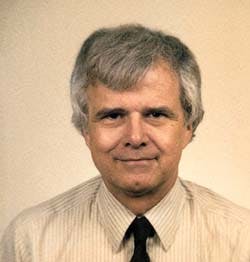James T. JeffersonA procedure to investigate the use of a drag-reducing agent (DRA) along a U.S. multiproducts pipeline has led to a method for calculating the ideal levels of DRA in a stream.
Consultant
Houston
Those levels permit the desired pumping rates and minimize the combined costs of pumping power and DRA use.
The pipeline was Shell Oil Products Co.'s 12 in. East Line that moves refined products from the company's Wood River, Ill., refinery to terminals along a 354-mile stretch culminating at Lima, Ohio (Fig. 1 [217,922 bytes]). The line was laid in 1968 and employs three pump stations.
As pumping rates along the line approached maximum capacity, Shell decided to employ a DRA, both to increase capacity and to reduce power consumption. DRA is injected immediately downstream of each pump station (Fig. 2 [132,460 bytes]) and assumed to be completely destroyed by the pumps at the next station.
The investigation covered several operating cases, each represented by a particular batch pumping schedule to be completed within a specified period.
Average pumping rates varied between less than maximum capacity of the line to greater than capacity (that is, greater than the capacity achievable without use of a DRA).
For each such case, the essential investigation results consist of the optimal amount of DRA to be injected into each batch at each of the three injection points. Accordingly, the number of separate DRA amounts obtained was the product of the number of injection locations and the number of batches in the schedule.
For each case, the investigation comprised three steps.
Step one
The first step consisted of the determination, for each DRA injection location, of a preliminary estimate of the DRA amount to be injected into each batch that traversed that location.For a particular batch-injection location combination, this estimated DRA amount is that which minimizes the sum of the costs of that amount of DRA and of the energy that would be dissipated (as a result of flowing friction) during transit of that batch through the segment of the line from the injection location to the next downstream pump station or batch terminal, as appropriate.
For purposes of this first step, this dissipated energy is assumed furnished entirely by the pumps at the station at the beginning of the segment.
If Q represents the average pumping rate for the specific case, P represents the frictional pressure drop (not considering DRA use) for the batch (evaluated at Q), and T represents the time required for the leading interface of the batch to transit the segment at Q, then the frictional energy dissipated by the batch during that transit (again, absent DRA) will be proportional to Q 3 P 3 T.
The power (kw-hr) consumed as a result of this dissipated energy is the ratio of the energy value thus obtained to the average efficiency of the pumps at the station at the beginning of the segment.
Note that energy required to overcome static head is excluded from this calculation because the use of DRA has no effect on that energy.
If this derived power consumption is denoted by E and if the ratio of "drag" (frictional pressure drop) with a given concentration (C) of DRA to the drag without DRA is denoted as R(C), then the power expended during transit of the batch with DRA concentration C will equal R(C) 3 E.
If the unit cost ($/kw-hr) of power at the injection station is denoted by CP and the cost of DRA ($/bbl) is denoted by CD, then the desired DRA concentration is that which minimizes power plus DRA costs: R(C) 3 E 3 CP + C 3 V 3 CD, where V is the volume of the batch.
Before this investigation, Shell had obtained, from its DRA vendor, a curve of percentage drag reduction vs. DRA concentration on the line. With this curve, the ratio R(C) could be very closely predicted by R(C) = (1+aC)/(1+bC), where: a and b are constants obtained from a fit of that curve.
Accordingly, the sum of power and DRA costs can be expressed as C 3 V 3 CD + E 3 CP 3 (1+aC)/(1+bC).
The DRA concentration C that minimizes this sum can be obtained by taking the derivative of this expression with respect to C, setting this derivative equal to zero, and solving the resulting equation for C (Equation 1 in the accompanying equations box [73,352 bytes]).
Each of the desired DRA amounts was obtained according to this formula.
Step two
The next step consists of obtaining a schedule of pump utilization, assuming batch DRA concentrations obtained as described.This schedule was generated by the power optimization program routinely used by Shell and furnishes the average pumping rate required for the case of concern and minimizes the power costs incurred.
The schedule specifies the pumps to be used at each of a set of line operating "events" that occur during the operating period. Such events include changes in originating or delivery locations, major gravity breaks at stations, and transitions from on-peak to off-peak power.
Step three
The third step consists essentially of a process of refining the values of DRA concentrations obtained in Step one, considering the effects of the pump utilization obtained in Step two.This refinement is called for because the DRA values obtained in Step one recognize neither transfers of power between stations, changes of pumping rate during the operating period, nor the existence of hydraulic bottlenecks. The intended results of this third step are DRA concentration values that will minimize the total amount of DRA used while still meeting the required average pumping rate for the case.
Since there is no explicit formula for these optimal DRA values, the results are obtained by successive approximations. Each is obtained from the results of a simulation of the line operation, based on the pump-utilization schedule obtained in Step two and on particular values of DRA concentrations for each injection location-batch combination.
The results obtained from each such simulation are:
- The simulated duration of the line operating period (that is, the time required to complete the pumping of the batch schedule of concern); and,
- Values of the incremental changes in operating period duration that will result from incremental changes of DRA concentration.
The simulation procedure
For purposes of determining the operating-period duration, the simulation includes a calculation of the origin pumping rate immediately before each "event" of the operating period and of the rate immediately following each event.The events, for simulation purposes, include each pump-utilization change, obtained during Step two, and each arrival of a batch at each line location. These batch arrivals incorporate delivery start and completion events.
The pump-utilization schedule generated during Step two specifies the pumps to be operated on completion of pumping of a given volume at the line origin. Similarly, each event of the other types will occur on completion of pumping of a specific volume associated with that event.
Therefore, the line operating period may be considered as a series of intervals between events, with each such interval represented by the volume pumped during that interval (that is, the volume associated with the event at the end of the interval less that associated with the event at the beginning of the interval).
If the volume pumped during the interval between two successive events is denoted by DV and if the flow rate immediately following the first of these two events is denoted by Q1 and the rate immediately prior to the second event is Q2, then the time duration DT of the interval between the two events will equal the ratio of the volume pumped to the average pumping rate during the interval; that is, DT = 2 x DV/(Q1 + Q2). In general, if there are L events during the operating period, and if DV1, DV2, . . ., DVL denote the volumes pumped between each of the intervals between successive events (that is, if DVk is the volume pumped between events k and k-1), and if Q1k and Q2k represent the flow rates at the beginning and at the end of the k-th interval, then the duration (T) of the operating period is given by Equation 2.As previously stated, the other objective of the simulation is finding, for each batch-injection location combination, the incremental change in the operating period caused by an incremental change in the amount of DRA injected into the particular batch at the particular location.
If the amount of DRA injected into the jth batch at the ith location is Dij, the number of injection locations is n, and the number of batches in the schedule for the case is m, then the simulation objective can be stated as finding the (m x n) values of alphaT/alphaDij for i = 1, . . . n and j = 1, . . . m.
As shown in Equation 2, T is a function of the flow rates Q1k and Q2k. As to be expected, these flow rates are in turn a function of Dij previously described. Accordingly, each alphaT/alphaDij can be obtained by Equation 3.
With Equation 2, alphaT/alpha Q1k = alphaT/alphaQ2k = -2 3 Vk/ (Q1k + Q2k)2. The values (Equation 3) of alpha Q1k /alphaDij and alpha Q2k /alphaDij are obtained as follows:
At any given time during the simulation, let:
- Q = The origin pumping rate (bbl/hr) calculated for that time, based on the line contents and pumps then in operation.
- F, L = The indices (line location numbers) of the first and last locations of the segment of the line that is "controlling" at that time, that is the segment of the line whose parameters are the most relevant.
If the calculated line pressures exceed the setpoints at all locations, then L will be the index of the line terminal; similarly, if the discharge pressures at all stations upstream of L are less than their setpoints, then F will represent the line origin.
dPL/dQ = The ratio of the change in pressure at the end of the controlling segment (that is, at location L) to an incremental change in the origin pumping rate. If DPi is the differential pressure developed by the pumps, if any, at location i and DDi is the pressure drop in the line section between locations i and i + 1, then dPL/dQ will equal dDPF/dQ + dDDF/dQ + dDPF+1/dQ + dDDF+1/dQ +...+ dDPL-1/dQ + dDDL-1/dQ.Further, because R(Cij) = (1 + aCij)/(1 + bCij), then alphaR/alphaCij = (a - b)/(1 + bCij)2; and because Cij = Dij/BVij, then alphaQ/alphaDij = (alphaQ/alphaCij)/BVij.
The values of alphaQ/alphaDij thus obtained, together with those of alphaT/alpha Q1k and alphaT/
alpha Q2k obtained previously were substituted into Equation 3 for alphaT/alphaDij, thereby completing the calculation of these alphaT/alphaDij values.
These results serve as a basis for improving the values of Cij in preparation for the next simulation. This process of simulation followed by Cij values improvement followed by simulation continues until "optimal" values of Cij are obtained.
Improving the Cij values implies finding values dDij of changes in the DRA amounts Dij that satisfy two requirements:- Any discrepancy between the simulated line operating period duration (T) and the desired duration is reduced
- The total amount of DRA use is also reduced, subject to the first requirement.
DRA minimizaton rule
The total DRA use is minimized when and only when:- The values of alphaT/alphaDij are all equal for those batch-injection location combinations that represent non-zero DRA injections (that is, for which Dij 0).
- The values of all alphaT/alphaDij that represent zero DRA use (for which Dij = 0) are less than the values representing non-zero DRA use. If this were not the case, then a certain DRA amount could be subtracted from the Dij corresponding to the lowest (absolute) value of alphaT/alphaDij and a lesser amount added to the Dij representing the highest such value without changing the operating period duration.
Use of this method of obtaining DRA amount changes results in a reasonably rapid convergence of Dij values to the "optimal" values, as described.
Afterwards
In general, the totals of power and DRA costs experienced by Shell and those indicated by the investigation as described here were comparable.As expected, greater DRA concentrations for fuel oils than for gasoline were shown to be economical. Particularly noticeable was the fact that total cost savings enabled by DRA use increased rapidly as pumping rates approached maximum capacity.
Acknowledgment
The author wishes to express his gratitude to Shell Oil Products Co. for its permission to publish this article and to Gary Manney of Shell for his cooperation and assistance.The Author
James T. Jefferson has been a consultant to, and software developer for, the U.S. pipeline industry since 1974. Previously he was employed by Shell Pipe Line Corp., Bonner & Moore Associates, then Pipe Line Technologists, all of Houston. He holds a BA (1959) in mathematics from Rice University, Houston.
Copyright 1998 Oil & Gas Journal. All Rights Reserved.



